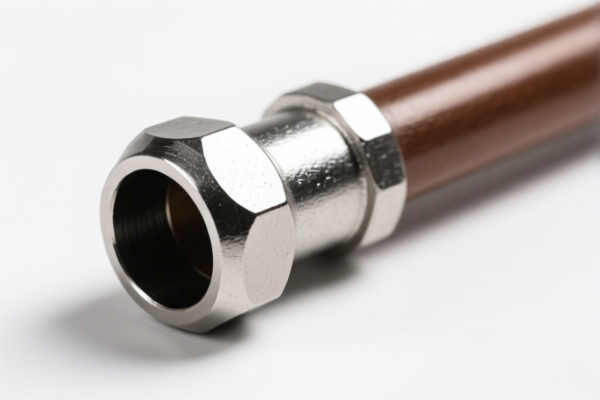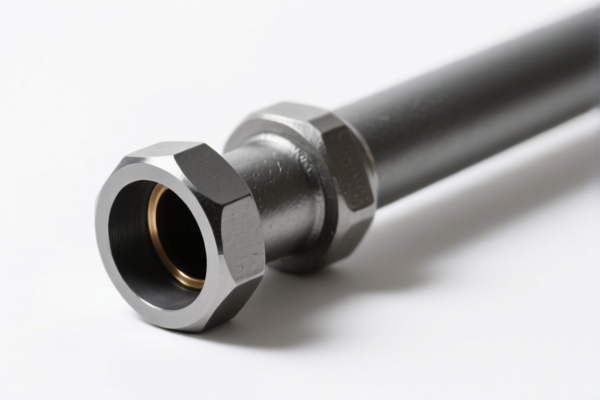| HS Code | Official Doc | Tariff Rate | Origin | Destination | Effective Date |
|---|---|---|---|---|---|
| 7307110030 | Doc | 59.8% | CN | US | 2025-05-12 |
| 7307923010 | Doc | 80.0% | CN | US | 2025-05-12 |
| 7609000000 | Doc | 35.7% | CN | US | 2025-05-12 |
| 8108906060 | Doc | 70.0% | CN | US | 2025-05-12 |
| 8108903060 | Doc | 60.5% | CN | US | 2025-05-12 |
| 3917400080 | Doc | 60.3% | CN | US | 2025-05-12 |
| 3925900000 | Doc | 60.3% | CN | US | 2025-05-12 |
| 8307103000 | Doc | 58.8% | CN | US | 2025-05-12 |
| 8307106000 | Doc | 58.8% | CN | US | 2025-05-12 |
| 8306100000 | Doc | 35.8% | CN | US | 2025-05-12 |
| 8306100000 | Doc | 35.8% | CN | US | 2025-05-12 |




Pipe Joint
A pipe joint is a connection point between two or more pipes, or between a pipe and another component. They facilitate the construction of fluid or gas conveyance systems, allowing for changes in direction, branching, and the connection of fittings and equipment. The selection of a particular pipe joint depends on factors such as the pipe material, pressure and temperature requirements, the fluid being conveyed, and applicable codes and standards.
Materials
Pipe joints are constructed from a wide variety of materials, often matching the pipe material for compatibility and corrosion resistance. Common materials include:
- Steel: Carbon steel, stainless steel, alloy steel – used in high-pressure, high-temperature applications, and for water, oil, and gas transmission.
- Copper: Common in plumbing, HVAC systems, and low-pressure applications.
- PVC (Polyvinyl Chloride): Lightweight, corrosion-resistant, and used for drainage, irrigation, and low-pressure water systems.
- CPVC (Chlorinated Polyvinyl Chloride): Similar to PVC but can withstand higher temperatures.
- PPR (Polypropylene Random): Used in hot and cold water plumbing systems.
- Cast Iron: Historically used in drainage and water systems, now less common due to weight and corrosion concerns.
- Brass: Used in plumbing and low-pressure applications, known for its corrosion resistance.
- Plastic (e.g., PEX, HDPE): Used in a variety of applications, offering flexibility and corrosion resistance.
Purpose & Function
The primary functions of pipe joints are to:
- Connect pipes: Joining sections of pipe to create a continuous pathway.
- Change direction: Allowing for bends and turns in the piping system.
- Branching: Creating splits in the pipeline to supply multiple outlets.
- Provide access for cleaning and maintenance: Some joints allow for disassembly for inspection and repair.
- Seal against leaks: Ensuring a leak-proof connection to prevent fluid loss and environmental contamination.
- Accommodate thermal expansion and contraction: Some joints allow for movement due to temperature changes.
Types of Pipe Joints
There are numerous types of pipe joints, categorized by their connection method:
- Threaded Joints: Pipes are joined using threads cut into the pipe ends and tightened with a wrench. Common for steel, brass, and some plastic pipes. Requires sealant (pipe dope or Teflon tape).
- Socket Joints: A socket receives the end of the pipe.
- Slip Joints: Allow for some movement and are common in drainage systems.
- Bell and Spigot Joints: One pipe end (the spigot) is inserted into the bell (socket) of another pipe, often sealed with a rubber gasket.
- Flanged Joints: Pipes are connected using flanges bolted together with a gasket between them. Used in high-pressure, high-temperature applications and for frequent disassembly.
- Welded Joints: Pipes are fused together using welding techniques. Provides a strong, permanent connection. Common for steel pipes.
- Compression Joints: A compression fitting uses a nut and ferrule to create a tight seal. Common for copper and plastic pipes.
- Grooved Joints: A groove is cut into the pipe ends and a grooved coupling is used with a gasket and bolts. Common for larger diameter pipes.
- Push-to-Connect Joints: Pipes are simply pushed into the fitting, activating an internal mechanism to create a seal. Common for PEX and some other plastic pipes.
- Soldered Joints: Used primarily with copper pipes, employing solder to create a watertight connection.
- Cemented Joints: Used with PVC and CPVC pipes, employing solvent cement to fuse the pipe and fitting together.
Usage Scenarios
- Plumbing: Residential and commercial water supply and drainage systems.
- HVAC: Refrigerant lines, heating systems, and ventilation systems.
- Industrial Piping: Process piping for chemical plants, oil refineries, and power generation facilities.
- Irrigation: Water distribution systems for agriculture and landscaping.
- Fire Sprinkler Systems: Water delivery networks for fire suppression.
- Gas Pipelines: Distribution of natural gas and other gases.
- Sewerage Systems: Wastewater collection and transport.
Pipe joints can fall under several classifications depending on the material and specific type. Here's a breakdown of relevant HS codes based on the provided information:
- 7307110030: This code covers tube or pipe fittings of iron or steel, specifically cast fittings for threaded pipe made of non-malleable cast iron. The basic tariff is 4.8%, with an additional 25.0% tariff, increasing to 30.0% after April 2, 2025. The total tariff rate is 59.8%.
- 7307923010: This code applies to other tube or pipe fittings of iron or steel, specifically threaded elbows, bends, and sleeves, including sleeves (couplings) made of iron or non-alloy steel. The basic tariff is 0.0%, with an additional 25.0% tariff, increasing to 30.0% after April 2, 2025. The total tariff rate is 80.0%.
- 3917400080: This code covers fittings for tubes, pipes and hoses of plastics, specifically other plumbing fittings. The basic tariff is 5.3%, with an additional 25.0% tariff, increasing to 30.0% after April 2, 2025. The total tariff rate is 60.3%.
Explanation of HS Code Structure (based on provided data):
The HS code system categorizes products using a hierarchical structure. Here's a breakdown using the example of 7307110030:
- 73: This chapter covers articles of iron or steel.
- 07: This heading specifically covers tube or pipe fittings of iron or steel.
- 11: This subheading further specifies cast fittings.
- 0030: This provides a more detailed classification for cast fittings of non-malleable cast iron for threaded pipe.
Important Considerations:
- The applicable tariff rates are subject to change, particularly after April 2, 2025, as indicated in the reference material.
- For HS code 3917400080, the classification is specifically for plastic fittings. Ensure the material of the pipe joint is accurately identified.
- HS code 7307923010 specifies fittings made of iron or non-alloy steel.
Customer Reviews
No reviews yet.